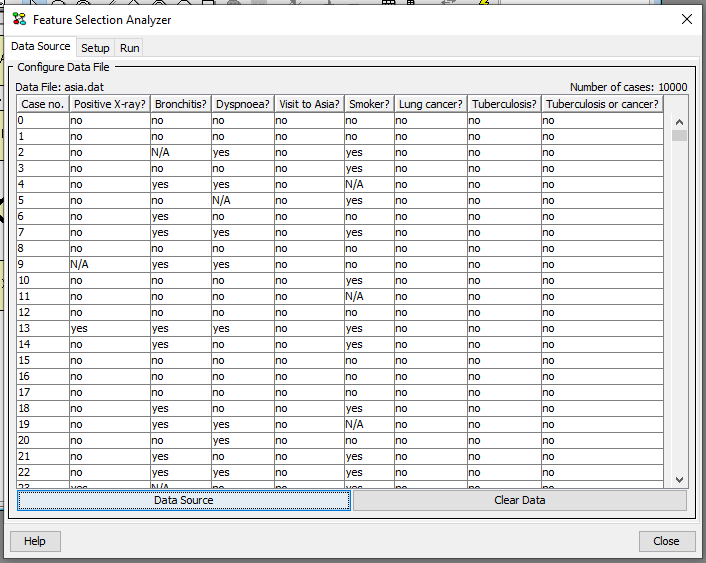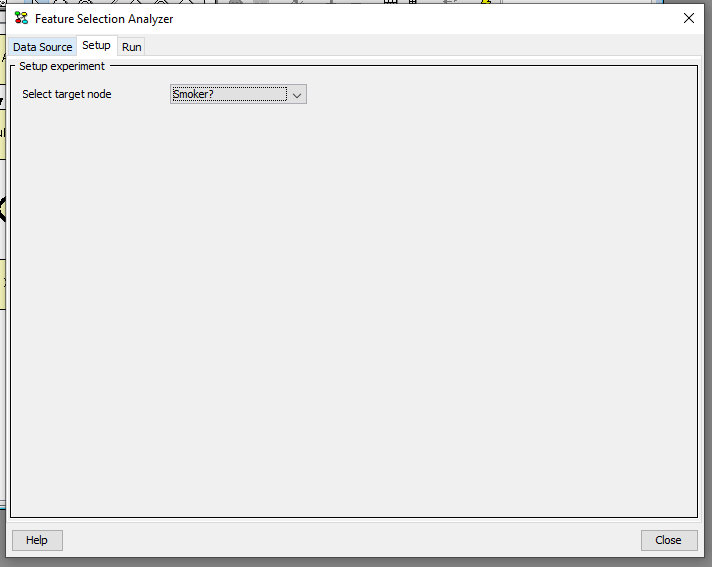Feature Selection Analyzer¶
Feature selection is an important task in the development of Bayesian networks for, for instance, classification. The HUGIN Graphical User Interface has support for feature selection through the Feature Selection Analyzer. The Feature Selection Analyzer has three steps:
Open a network in the network pane
loading a data file for feature selection
selection of the target variable (e.g., the classification variable) feature selection
the feature selection
Each step is described in the following sections.
Load Data File¶
To perform any analysis the wizard will first need a set of cases. Cases can be imported by loading a HUGIN data file or connecting to a database service and import. Click on button “Data Source” to import data. The column names in the data file must correspond to the names of the nodes in the model. Columns not matching the nodes in the model will be filtered out.
After importing a set of cases, the Data Source pane will display a table with the imported cases, see Figure 1. To discard all imported cases click on the button “Clear Data”.

Figure 1: Data Source pane. A set of cases has been imported.¶
Select Target Node¶
Feature selection is performed relative to a target node. The target node should be selected in this pane.

Figure 2: Setup Pane.¶
Feature selection is supported for discrete chance nodes only, i.e., the target node and the feature nodes should all be discrete chance nodes.
Feature Selection¶
Feature selection is based on computing the p-value of the test for marginal independence between the selected target node and each possible feature node. Figure 3 shows the result of feature selection on an example network and dataset.

Figure 3: Run Pane.¶
To support feature selection, the p-value of the test for marginal independence is computed. The p-value is the tail probability under the independence assumption. The higher the value the more likely the nodes are to be independent. (p is the probability of obtaining a Q value as large or larger than the Q value computed from the data under the null-hypothesis - which is the independence assumption. The Q value is a measure of the distance between the joint distribution of the feature and the target and the product of the marginal distributions of the feature and the target).
Thus, for a small value (for instance, less than a significance level alpha), the null-hypothesis that the nodes are not related is rejected and, hence, we assume the feature to be relevant for the target node.
If the user selects a set of nodes in the list, then these nodes will remain selected when the wizard is closed. This is useful for selecting the highest scoring features.
